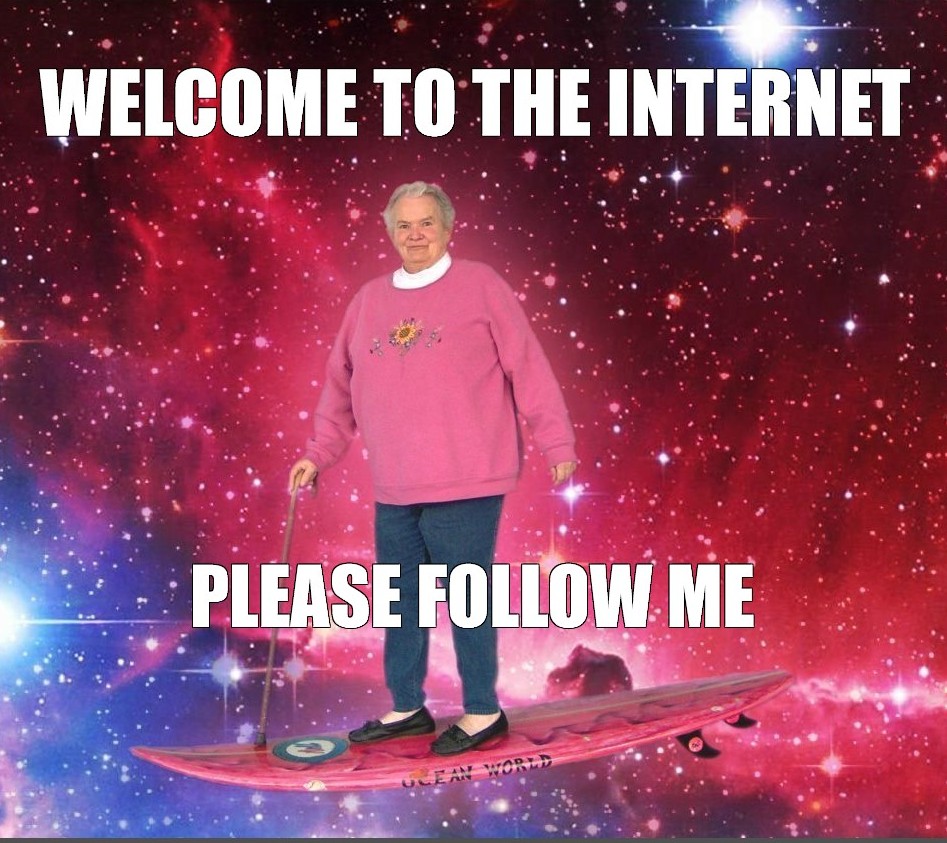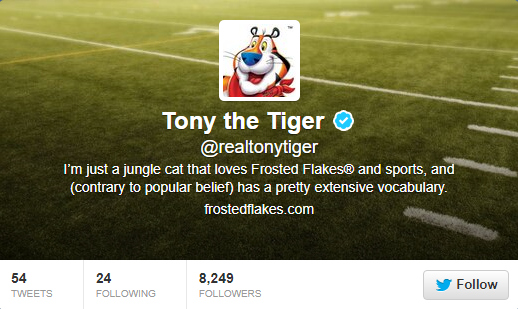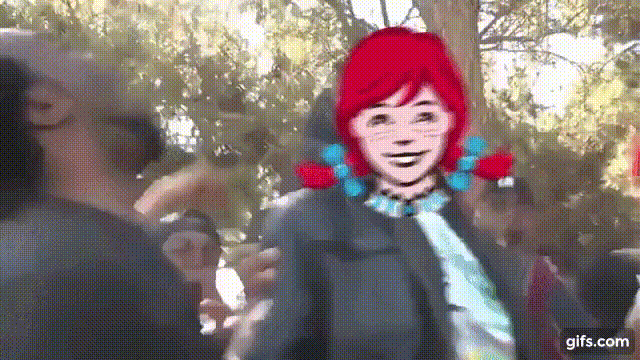- MAIN PAGE
- – elvtr magazine – COMMUNITY NOT COMMODITY: 8 TIMES BRANDS DIDN'T GET INTERNET RIGHT
COMMUNITY NOT COMMODITY: 8 TIMES BRANDS DIDN'T GET INTERNET RIGHT

The internet has rewritten our relationship with the world. Over the last 10 years, it has innovated every form of education and communication in a drastic fashion.
Communities of daunting size and scope have sprung into existence, getting rid of geographical shackles of the past.
And this goes double for brands. Social media marketing, Search Engine Optimization (SEO), and clickbait metrics are now a staple in the arena of public relations.
However, the last 10 years have also revealed a disconnect between how the corporate world views the internet and how actual internet inhabitants view it themselves.
We've collected some cases of brands getting the WWW — wrong and right. What were their assumptions, what were their mistakes, and then what were the results?
MOB MENTALITY: WHEN THE INTERNET LEARNED OF ITS INFLUENCE.
First of all, we need to make it very clear what the internet is, and what the internet is not.
Brands often perceive the internet as a platform to deliver messages about their products. Basically, they perceive the internet as a resource. And the internet is a resource. What it is not, is just a resource.
When the average internet user hops online, they are here for news, funny memes, and a place to belong. They pay attention to the rules and voices of the community.
These rules and voices can be passionate, volatile, and utterly absurd to those who try rationalize them. And yet, by taking those guidelines to heart and participating in the conversation as a whole, these users establish the internet as a community.
Obviously, the internet didn’t start this way though.
The very first Flashmob
One of the earliest flexes of the internet’s influence happened in 2002 when Harper’s magazine editor solicited 130 people to come to Macy’s New York store.
The organized mob gathered around an expensive rug, explaining to sales assistants that they lived in a New York warehouse and were looking for a “love rug”. This was done deadpan because of course it was. It was a serious matter.
Quickly coined a “flash mob”, this real-life gathering powered by the internet was infectious. Obviously not the last instance, large gatherings of people randomly breaking to choreographed dances, games, or even demonstrations still happen everywhere to this day.
And you would have never known any of them happened if it wasn’t for the internet.
The ability to share not only a plan, but an experience with a large number of strangers was unprecedented. Suddenly, they weren’t strangers, they were all from the same place. The internet.
Online communities quickly realized they didn’t need to visit Macy’s New York store to make headlines, and no business was safe.
Gushing Grannies
In 2012, Mountain Dew decided to reach out to the internet community as their promo resource in their “Dub the Dew” campaign. Mountain Dew asked the internet to choose and then vote on the name for their new upcoming product, set to be an apple-flavored version of their classic soda.
What could possibly go wrong?
The internet is first and foremost for having fun, remember? So the internet, primarily the forum website 4chan, simply followed the rules of their community. They submitted names and voted for their favorites.
It resulted in nonsensical and extremely obscene options. Most consisted of some variance of “Gushing Granny” while sitting pretty at #1 was the option, “Hitler did nothing wrong”.
One of the first major brands to be side blinded by the internet’s… passion, Mountain Dew quickly removed themselves from responsibility. The business made it clear that the poll was created by an employee, with no agreement from the management.
Tony the Tiger flirts with furries
Not every internet community is widely known though. 4chan’s involvement in business and political affairs is well documented. Less so are the identity and fascinations of the furry community.
The internet had allowed people from every subculture to find their own.
As our understanding of social media grew, brands realized their presence online was a boon to their business. So Kellogg’s launched a Twitter account for their mascot: Tony the Tiger. His can-do attitude and child-friendly demeanor seemed perfect for online presence.
Unfortunately, while frosted flakes were part of a balanced breakfast, members of the furry community decided that Tony himself was quite the snack.
As an aside, most Furries are people who have an interest in anthropomorphic animals or animals with human qualities. Many furries create their own animal character, known as a fursona, which functions as their avatar within furry communities. Furries are usually negatively associated with also sharing a sexual connection with their fursonas, though this is not always the case.
People would visit Tony the Tiger’s Twitter page. They left comments referring to him as “daddy”, and requesting services from Tony to varying sexual degrees.
At first, Kellogg’s attempted to steer the unwanted attention elsewhere. Through Tony’s tweets, they tried to make it clear this was not the Twitter page that the furry community thought it was.
Of course, like all instances of a big business telling a subculture to stop, this only pushed the sexualization of the frosted flakes mascot to new heights.
It all ended with a decision to shut the profile down, as Kellogg’s was not able to withstand the massive flow of furries.
Recommended courses
SAVIORS OF SOCIETY: THE RISE AND FALL OF SELF-APPOINTED HEROES.
When people who are having fun meet serious consequences set by the establishment – stakes are forever altered.
On July 2, 2017, a Reddit user created a video mocking Trump and CNN. The video in question was a meme, intended for humor. It was later reposted by Trump’s official Twitter page.
CNN quickly caught wind and decided to take action.
The international news station hired investigator Andrew Kazinski to find the creator of the meme. After 2 days to find the identity of user u/HanA**holeSolo, scours his Facebook page, and sends him an ultimatum.
He was to delete the meme or CNN would publish his identity. They were threatening to publish private information about him, also known as doxing.
Such an attack towards a fellow user’s personal privacy infuriated the Reddit community. Reddit united with the 4chan to generate so many memes that CNN was at a loss to find all of the “perpetrators”.
Aside from that, Reddit users contacted brands who bought ads from CNN, pushed the #CNNBlackmail hashtag, and also spread the message that the person CNN was doxxing was a 15-year-old boy.
To disprove this, CNN’s only option was to reveal the user’s information, which would only further Reddit’s fervor.
People also targeted CNN ratings, downloading CNN app and leaving 1-star reviews.
CNN's opponents even launched a contest, promising a $20,000 award for anyone who would create the best CNN-related meme.
By July 6, every reputable media would pick up the blackmailing case. It took the internet four days to send a clear message: we protect our own.
BRAVE NEW BOYCOTT: AS PUBLIC RELATIONS ADAPTS, MEME CULTURE OVERCOMES.
So, the internet is clearly not just a resource. But is it still a resource at all? Is there a place for businesses amid all the clamor of the online community?
What does it look like when brands become involved in the discourse?
Keurig-Hannity conflict
In November 2017, Sean Hannity defended Republican Alabama Senate candidate Roy Moore on his political talk show.
On November 10, a Twitter user tagged Keurig, one of the show’s sponsors, exposing Roy’s Moore sexual harassment cases and encouraging the brand to stop financing the show.
Keurig responded to the tweet and they chose to cancel their contract with Hannity.
Suddenly businesses had a voice. What amounted to one less sponsored ad-spot spoke volumes. And the internet responded.
What followed was an initial tirade of hate, as Hannity supporters launched #BoycottKeuring and #StandWithHannity hashtags, publishing videos of them destroying their Keurig products.
On the other side - there were people supporting Keurig’s decision, actively buying and promoting products. While politically charged, the discussion wasn’t about ideas, but merely what a pod-based coffee maker’s marketing stood for.
And in truth, it didn’t matter the case - posts gained enormous exposure, and Keurig’s brand awareness was raised. For free.
30th anniversary of Nike’s “Just do it” slogan
Keurig-Hannity precedent was clearly unplanned and the response it created was a bonus, not an intention. But Nike’s celebration of 30 years of their “Just do it” slogan was a different story.
Nike launched a high-quality ad campaign, featuring dozens of great athletes and elevating their struggles. The ad was narrated by Colin Kaepernick, whose decision to stand against police brutality was controversial with conservatives at the time.
Nike had deliberately chosen to celebrate black athletes’ achievements and Kaepernick’s activism, all in an extremely inspiring commercial.
It was uplifting and divisive. And Nike knew it.
The campaign created a fervent backlash. Many conservatives posted videos of them burning their Nike products, creating a #burnyournikes hashtag.
Much the internet simply sat back and watched though, while Nike has gained millions of dollars worth of advertising... for free! The people Nike’s ad was targeting listened.
Some may point to the ethical manipulation of Nike’s ad campaign. At the end of the day though, it elevated many marginalized voices and created an international conversation about race, motivation, and equality.
It also generated 6 billion dollars in brand value growth for Nike.
Gillette: We Believe: The Best Men Can Be
A very similar case of tackling important social issues in ads happened with Gillette when they created a powerful message tackling toxic masculinity.
While Nike’s “Just do it”, the campaign was phrased with their usual tone of athletics and perseverance Gillette’s short film ad-spot addressed their issue with a blatancy their brand wasn’t known for. This was an intentional grab at being part of the conversation.
Gillette’s own response to the ad’s controversy made this clear. “If we get people to pause, reflect, and to challenge themselves and others to ensure that their actions reflect who they really are, then this campaign will be a success.”
The controversy was predictable. Numerous posts were created on Twitter with #BoycottGilette and #toxicmasculinity hashtags, showcasing how people destroy Gillette’s products.
Again, the points raised and the methods used were not bad, and they did start a conversation as intended. But also, as intended, they ensured Gillette’s name in the headlines long after the ad stopped airing.
Wendy’s: Good communication isn't enough. It also takes responsibility.
As the internet continued to be a resource for those wise enough to use it, other brands sought to become a part of the internet’s community as a form of marketing.
Wendy’s Twitter account became extremely popular, learning to walk the fine line between a comedic goldmine and big business.
By roasting competitors, replying to users’ tweets with witty comments, and using memes in their communication, Wendy’s Twitter profile merged with the community seamlessly.
This grassroots marketing method generated a unique kind of exposure and lots of it. Wendy’s was able to create camaraderie with average Twitter users and remind people that there was a real person behind the Twitter account.
However, this extra exposure came at a cost. When people found out that Wendy’s abused human rights, exploiting farmers’ work to increase the efficiency of their supply chains, acting as part of the community suddenly allowed the internet to hold Wendy’s to the rules of the community.
People began demanding answers from Wendy’s on Twitter but did not receive a viable answer. So, the boycotts and protests exploded in April 2019.
Creating great communication can backfire if your business is not socially responsible. Communication goes both ways.
/r/Wallstreetsbets vs Wall Street
We can’t talk about the internet’s influence on business without discussing the most recent and prominent example. Reddit’s squeeze and hold of GameStop’s stock.
When Wall Street brokers tried to short GameStop’s share price at $13.66 a share on Dec. 9, /r/Wallstreetsbets began investing money to keep their childhood-favorite brand alive.
The GameStop stock had largely been seen as an option often utilized for shorting stocks, which simply speaking is just betting that a given stock will go down. By buying shares you can force a stock up, and make the shorts cover their positions that they bet on going down. This is called a short squeeze.
Right now, the situation is unsettled, but the Wall Street experts believe it won’t last as people will want their money back, and brokers still hope to pull their gains from the original shorted stocks.
The GameStop share price is currently $189.50.
If the internet can reach the stock market, then the community can reach your business too.
COMMODITY VS. COMMUNITY
The internet is a resource, but it is also a community.
When the community utilizes its tools: people, morals, and messages — we get the Gamestop Wallstreet situation.
When faced with such passion, it can be easy to the internet community as something to fear. And every mistake costs a lot.
But when a business utilizes the internet's tools, its people, its morals, and its messages; they become a part of the community. And the internet becomes the best customer.
*ELVTR is disrupting education by putting proven industry leaders in a virtual classroom with eager rising stars. ELVTR courses offer 100% instructor driven content designed to give you practical knowledge within a convenient time frame. Choose the right course for you!





